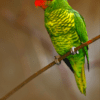Mindanao Lorikeet
Also known as:
Johnstone's Lorikeet, Mrs. Johnstone's Lorikeet, Mount Apo Lorikeet
Also known as:
Johnstone's Lorikeet, Mrs. Johnstone's Lorikeet, Mount Apo Lorikeet
DID YOU KNOW?
The Mindanao Lorikeet flies with audible whirring of wingbeats, quite unlike any other parrot.

Trichoglossus

johnstoniae
Size:
20 cm (7.8 in)
Weight:
48-62 g (1.7-2.2 oz)
Subspecies including nominate:
two: T.j. johnstoniae, T.j. pistra
Colour Adult:
T.j. johnstoniae: Both adults in general green; pink/red forecrown and cheeks; band from lores to occiput dark purple; yellow underparts, scalloped with green; yellow/green underwing coverts and undertail coverts; underwing band yellow. Beak orange/red. Eye ring dark grey. Eye red.
T.j. pista: Both adults darker and duller red on face; band from occiput to lores wider; upperparts darker green and underparts brighter and more vivid yellow.
Colour Juvenile:
T.j. johnstoniae: Less pink/red on face; dull lilac/brown spot behind eye where band is in adults. Eye ring grey/white. Beak black/brown. Eye brown.
Call:
Calls made in flight are continuous notes or loud, sharp sounds. Same sharp notes or soft, twittering sounds accompany feeding.
More Information:
Content Sources:
CITES
BirdLife International
Cornell Lab of Ornithology/Birds of the World
Parrots: A Guide to Parrots of the World, Juniper and Parr, 1998
Parrots of the World, Forshaw and Cooper, 1989. 2010 edition
Parrots of the World, Forshaw, 2006.
Lexicon of Parrots, Thomas Arndt.
Captive Status:
Rare
Longevity:
Not recorded.
Housing:
Enclosure 2.5 x 1 x 2 m (8 x 3.3 x 6.5 ft), minimum temperature 15 C (60 F).
Diet:
Commercial lory nectar or one homemade from honey, pollen, brewer’s yeast, oat flakes, multigrain flakes, vitamins and minerals; rusk or biscuit softened in milk; fruits such as: apple, pear, orange, cactus fruits, papaya, mango; green leaves such as: Swiss chard, lettuce, kale, sowthistle, dandelion, chickweed; small amounts of sprouted millet spray.
Enrichment:
—
Nest Box Size:
Vertical box 18 cm x 18 cm x 40 cm (7 x 7 x 16 in).
Clutch Size:
2
Fledging Age:
5 weeks
Hatch Weight:
—
Peak Weight:
—
Weaning Weight:
—
World Population:
1500-7000 mature individuals, decreasing.
IUCN Red List Status:
Near Threatened
CITES Listing:
Appendix II
Threat Summary:
Not globally threatened. A BirdLife “restricted-range” species. This species has historically been affected by deforestation in its very limited range. Recent fieldwork suggests it is now very uncommon and that habitat destruction is limiting the lower altitudes of its range. Parts of its range, however, are being protected under the National Integrated Protected Areas Scheme (NIPAS).
Range:
T.j. johnstoniae: Mounts Apo, Kitangland, Matutum and Piapayungan, C Mindanao.
T.j. pistra: Mount Malindang, W Mindanao Island.
Habitat:
Found between 1000-2500 m (3280-8200 ft) in mossy montane forest, forest edge and in degraded or logged areas.
Wild Diet:
Feeds on nectar from trees with red blossoms, also fruits, pollen and insects.
Ecology and Behaviour:
Seen in pairs or small flocks. Moves altitudinally with groups of birds roosting at lower levels, moving higher during the day to feed on flowering trees and shrubs before returning to lower levels at night.
Clutch and Egg Size:
2 rounded eggs, 22.0 x 19.0 mm (0.9 x 0.7 in).
Breeding Season:
March-May or possibly later.
Related Links:
—
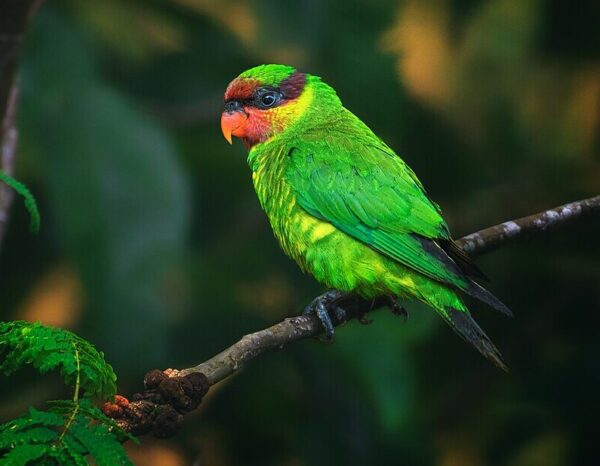
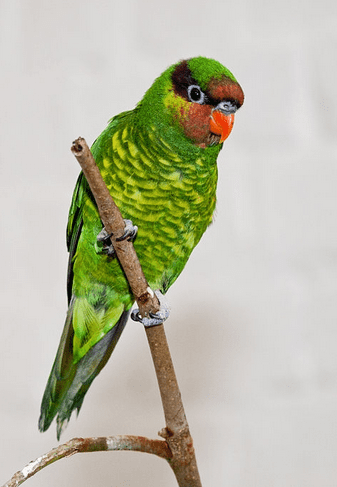
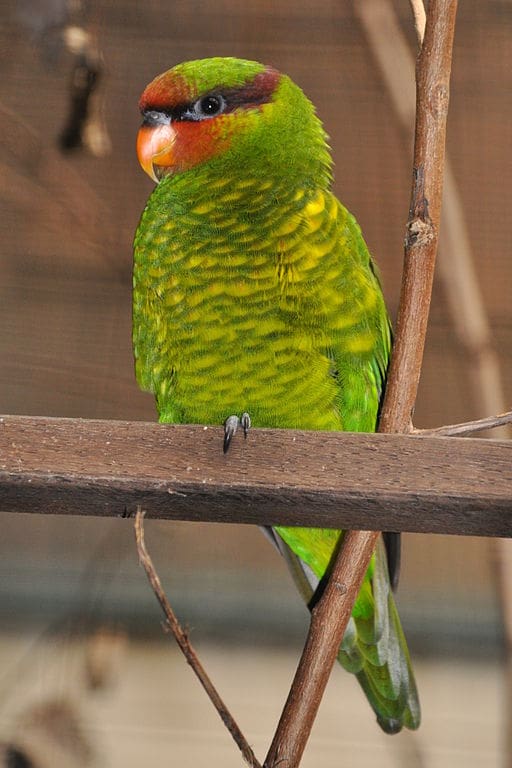
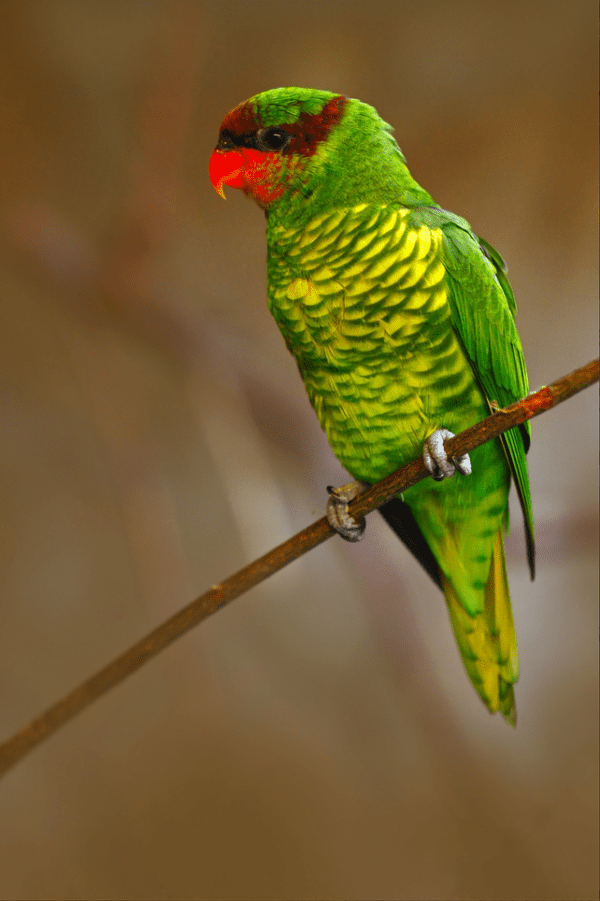
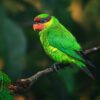
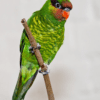
![© Quartl (Own work) [CC BY-SA 3.0] via Wikimedia Commons A Mindanao Lorikeet perches on a twig](https://parrots.org/wp-content/uploads/2023/01/wpt_Mindanao-Lorikeet_1230-2-100x100.jpg)
